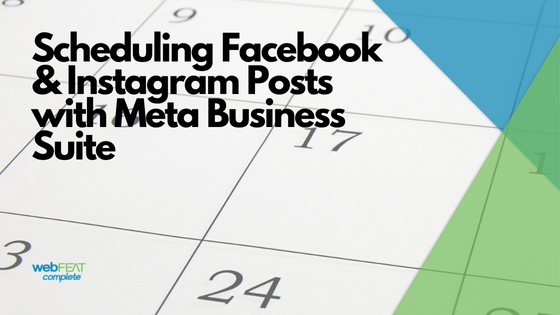What do we mean by “shareable content”?
While the term “shareable content” kind of refers to the overall ability of a viewer to share your content- aka whether or not you have a “share” button on your blog post, or allow people to share your social media posts, we’re more so talking about whether or not it is content that viewers will want to share. For example, let’s say you write a blog post on the 10 Trendiest Stocking Stuffers for 2020. Someone reads your blog, thinks it’s amazing, and shares it to their Facebook feed. Now all of their friends are aware your blog exists, and they may view it and share it with all of their friends as well. Something in your blog appealed to that original viewer and will (hopefully) continue to appeal to their friends and their friends’ friends. That’s what we mean by “shareable content”.
Why you want shareable content
Using the same example- you wrote your blog for a reason, right? You wanted as many people as possible to see your list of 10 Trendiest Stocking Stuffers of 2020. Maybe you’re an ecommerce business, and all of these stocking stuffers can be found on your website. The more people who read your blog, the more the likelihood that you’ll sell out of those stocking stuffers. Your own personal network is only so big, and yes of course it can be expanded with advertising. But other people sharing your blog? That’s *free* advertising. As soon as that blog post is shared to someone else’s network, your own network has grown by that many people. The more shares that blog post receives, the more your network grows exponentially.
How shareable content can benefit you
When more people share your content, whether it be a blog post, a social post, an email, or whatever, that increases the chances of driving more traffic to your website- which is always a good thing. Not only does more traffic help your SEO, it increases the likelihood of people converting from your website. The more people who see your content, the better. You can increase your brand recognition and establish yourself as a thought leader. So even if the people who see your content don’t need your services/products right now, if they do later they will be more likely to think of you.
Tips for creating shareable content
Research the competition
Take a look at your competitor’s social profiles, read their blog posts, sign up for their email lists. Check out what content people seem to be engaging with, and how they’re responding to what your competitors are sharing. Take a look at all of their content over the last few months. Don’t copy exactly what they’re doing, necessarily, but use it to help focus your own thoughts and ideas for your company’s content. For example, if your company sells hair care products and you notice that your competition has a huge following and lots of engagement- figure out why. Are they sharing tips and tricks to softer, shinier hair? Maybe you should be coming up with your own hair care tips and tricks. Maybe they’re working with influencers to create videos of them using the products, that could be an idea for you to work off of as well. Don’t go to the exact same influence and ask them to make the exact same video for your accounts, but instead use their success to help build your own ideas from that.
Research your audience – Speak to their interests
An essential step to creating shareable content is to research your target audience. Find out what they are interested in, how they communicate, what resonates with them, and what they are hoping to learn. This will take some social listening, as well as engaging with the people who follow and interact with you to figure out what interests them and what kind of content they are most likely to engage with in the future. To do this, you first need to identify who your target audience is. Let’s say you’re a car dealership and you’re targeting people in their mid-twenties buying their first car, you need to do some digging on people in their mid-twenties (who will probably be buying their first car) and figure out what they’re interested in. Follow college students in your area and college campuses, see what kind of content they’re sharing and what your audience is interacting with. This will help give you an idea of the content you can share, that relates to car sales, that this audience will be most likely to interact with.
Add value to your audience
If your content adds value to your audience and they feel as though it will also add value to their network, that’s when people share your content. Figure out what kind of questions your network is asking, what they’re interested in learning about. Review new industry trends and answer questions about them, give advice or tips on things related to your industry. This helps to establish you as a thought leader and helps make people more inclined to share the content that you put out there. There are many ways to figure out the questions that they are asking. You can do this through social listening, follow people from your audience and take note of the things the post and the questions they ask. You can also utilize features such as Instagram stories to create polls, or send out market analysis surveys to your email list. This is a surefire way to figure out what adds value to them and be able to provide it.
Take a stand on common issues your audience faces
If it’s appropriate to your industry and for your audience, you may want to consider taking a stance on current issues the audience is facing. Let the people who engage with you know that you agree with them on issues. Doing so helps them feel more connected with you and makes them more likely to engage with and share your content. This could be something lighthearted, like if you’re a fast-food chain and you make a post about coke vs Pepsi, and why the one your chain offers is better than the other. Or it could be something more serious, like taking a stance on politics. What used to once be taboo has become more commonplace: brands and influencers making it clear what their political beliefs are. All of these options should be something you consider carefully and thoughtfully. Decide what fits best with your brand and what will resonate the best with your audience.
Make sure your content is visually appealing
Visually appealing content is more likely to draw the attention of your audience. If you have a really great blog post, but it’s too confusing to follow and read, the chances of people liking and sharing it are lower. The same goes for social media, you could be sharing something incredibly valuable, but if the post doesn’t catch your audience’s attention in the feed, they aren’t going to like it, much less share it. With so much of our content being visual in this day in age, it is important to make sure all of what you share fits together in a cohesive, visually appealing way that is easy to read, understand, and engage with. Our blog about Instagram success further discusses the importance of having a visually appealing feed, and this can be applied to all content platforms.
Follow trends
Follow along with the trends that your audience resonates with. If the people engaging with you share memes, create memes relating to your business. If they resonate with how-to guides, create how-to guides. A lot of this ties back into social listening and figuring out what kind of content your audience wants to see, and then creating that content for them.

Utilize different forms of media (videos, Facebook live, reels, etc)
Using different forms of media, such as video, live videos, Instagram reels, and all of the other features various platforms have to offer, you increase your likelihood of connecting with different parts of your audience. Some people are really into reels, so that is the content they will be more likely to share. Other people like static images, or posts with multiple images, so you want to target them with content like that. Having a variety of different types of content also spreads out how often you can use the same general idea. For example, your blog of the 10 Trendiest Stocking Stuffers of 2020 can be made into a slider graphic, a long image post, a video, a reel, and an email. All of that variety from just one piece of content- it really goes a long way.
Try to be inspiring
People are more likely to share things that inspire them, and a lot of inspiration comes from how you say something. For example, an email with the title “Your little ones cannot go without these stocking stuffers this year” is more likely to be opened and forwarded than the boring “Check out these stocking stuffers!”. If you seek to inspire people, they will want to share that inspiration with their network.
Try to be relatable
Lastly, try to be relatable. Most of your audience is going to be more likely to share content that they relate to, or that directly applies to their lives. If they can connect with the content that you are creating, they are going to want to share it with their network so that more people are able to connect with it as well. The more relatable you are, the more likely people are to share your content. You can be relatable through the images you share, the actual words (copy) associated with the content, and how you connect the two together.
It’s not always easy to come up with content, much less come up with content that your audience is going to want to share. Our team of content experts here at webFEAT Complete would love the opportunity to get connected with you. We can work with your business to help build a strategy and increase the shareability of your digital marketing content. Contact us today for more information!
“”





